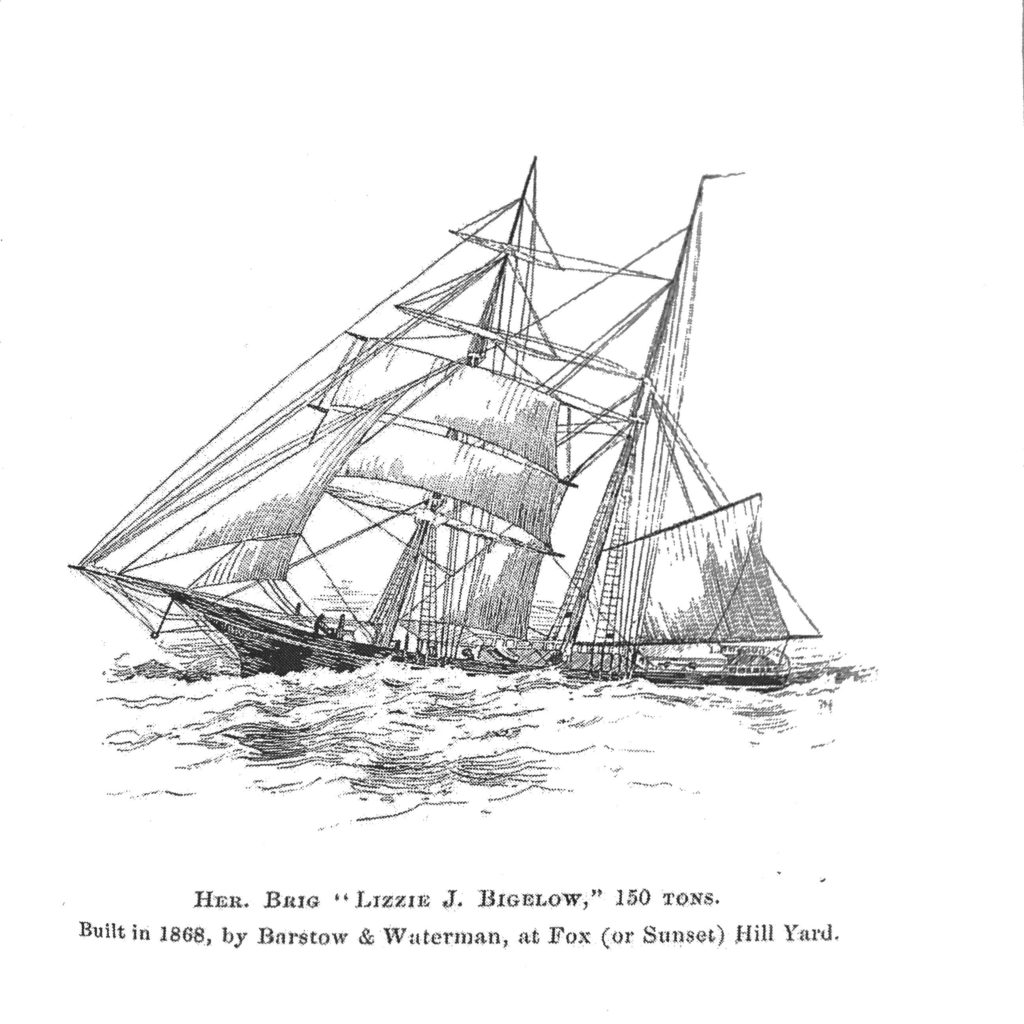
By Caleb Estabrooks, Hanover
Fox Hill is located in present day Norwell where the Barque Hill/Brigantine Circle neighborhood can be found. Today it is difficult to identify the hills that dominated the landscape, but during the colonial and early federalist era; when the area was deforested and before the bulldozers had leveled the land for the building of homes and roads, Fox Hill and Sunset Hill were its defining features. At the foot of the easterly slope of Fox Hill there is an area where the ground is fairly level at the river’s edge. Upriver from here the bank rises at nearly 45 degrees and downriver the bank is edged by over 100 yards of the grassy marsh that borders the vast majority of the North River.
According to L. Vernon Briggs’ book History of Shipbuilding on the North River, this small patch of level ground at the foot of Fox Hill attracted the eye of shipwrights as early as 1690. Such a large number of ship builders worked this yard over the years that it became impossible to label this yard as “Waterman’s”, “Barstow’s”, “Copeland’s”, “Turner’s” or any other family name, so it is referred to by its geographical location.
John Palmer and Nathaniel Church most likely built ships at Fox Hill starting in 1690. We have no details of the ships built here during the colonial era; either the records were never well made or perhaps lost to time or taken by the British during their evacuation of Boston (much of the early ship registry data that could have been used for research was lost in this manner). Through his tedious research, L. Vernon Briggs recorded names and descriptions of 51 vessels built at Fox Hill between 1802 and 1869. These vessels were mostly schooners and brigs but a few barks (barques) and ships as well. 13 of the ships (about 25%) built at Fox Hill were used in the whaling industry.
The LIZZIE BIGELOW is a good example of the ships built at Fox Hill. Built in 1868, she was a 150 ton Hermaphrodite Brig used for whaling and trading until she foundered at sea in 1885 (all hands survived). A Hermaphrodite Brig is a two masted vessel with the foremast both square rigged like a brig and aft rigged like a schooner. The main mast, which is the rearmost mast, is aft rigged. This style rigging gave excellent performance on all points of sail. Brigs, schooners, barks and ships are other types riggings used on the vessels built at Fox Hill.
What I find most interesting about this shipyard is that she was going strong at the tail end of the North River shipbuilding era. During the last decade (1859-1869) of activity at the Fox Hill shipyard there was scarcely a year without a ship on the stocks… 11 ships were built here during this time, all of them by the firm created by Capt. Elijah Barstow and Thomas B. Waterman. Chittenden Yard (also in current day Norwell) is credited with producing the last great sailing vessel on the North River, however, of the last 12 ships built on the North River, nine of them were launched at Fox Hill. The shipyards of Hanover and Pembroke, both within one mile of Fox Hill, ceased production before the end of the 1840s, but Fox Hill was often launching two ships per year at this point. Perhaps this was a more favorable yard at the time, so the remaining shipbuilding was consolidated there. Or maybe the builders in Hanover and Pembroke retired or moved on at this time (many went to Medford, Boston, Buzzards Bay or Maine). Whatever the reason, Fox Hill shipyard was a busy place right up until 1869 when the last ship was launched here: the 191 ton schooner HOPE ON.
The HOPE ON was built on the account of Barstow and Waterman, who were not able to find a buyer for this ship until 1871. The firm lost money on this speculation, which would explain why this was the last ship built by the firm and the last ship launched at Fox Hill. This vessel sailed out of New Bedford until 1883 when she was sold to new owners in Chile. According to L.V. Briggs, the HOPE ON was still sailing out of Chile when he published his book on North River shipbuilding in 1889, a final testament to the high quality of the vessels produced at the Fox Hill shipyard.

